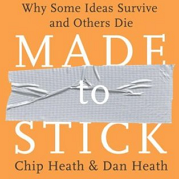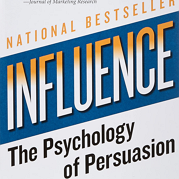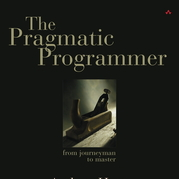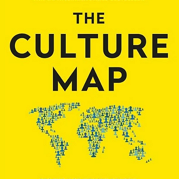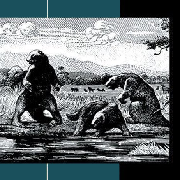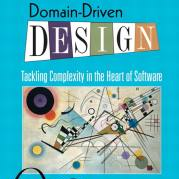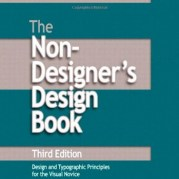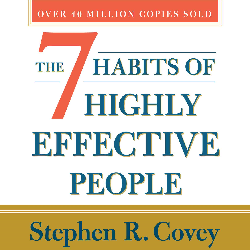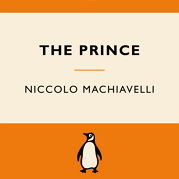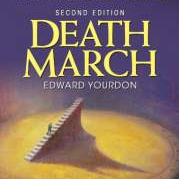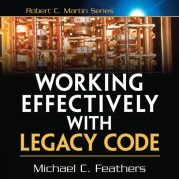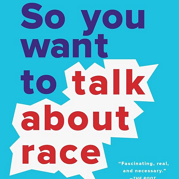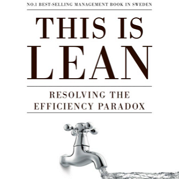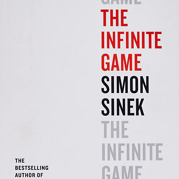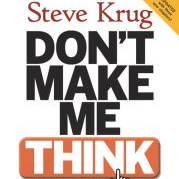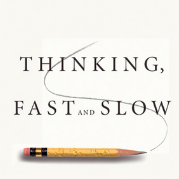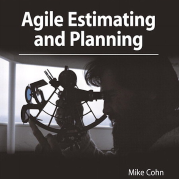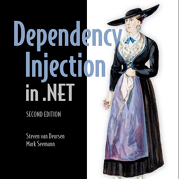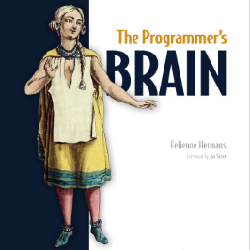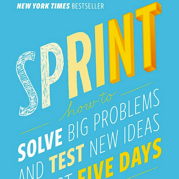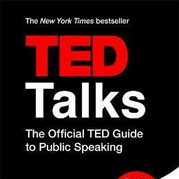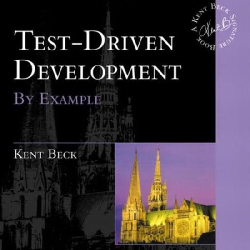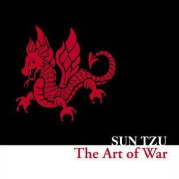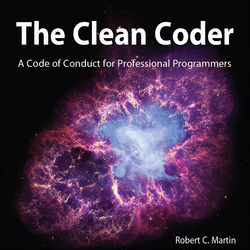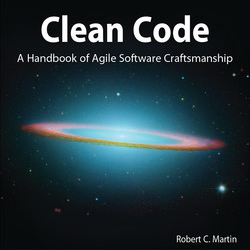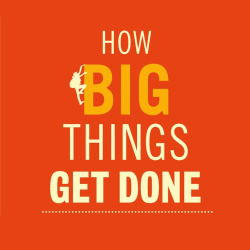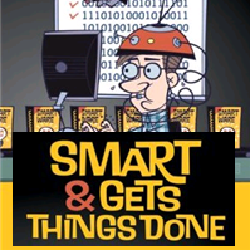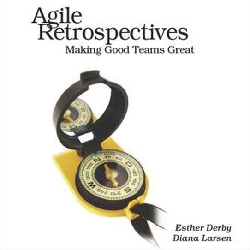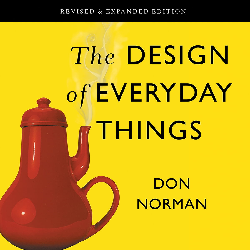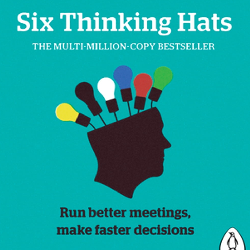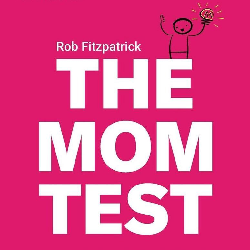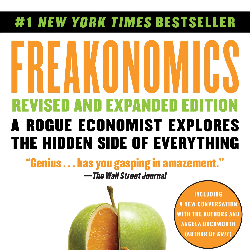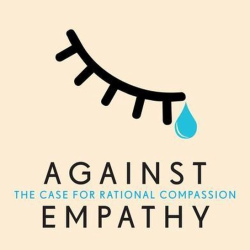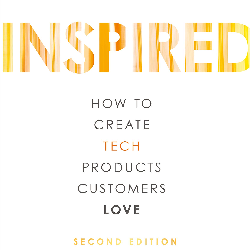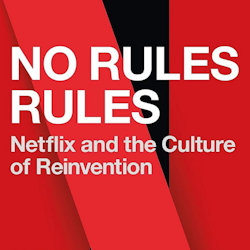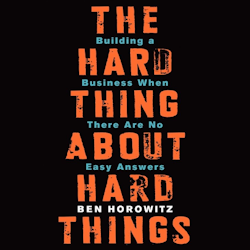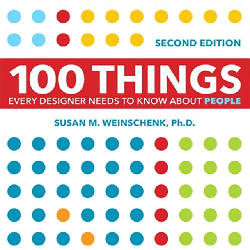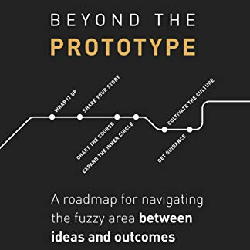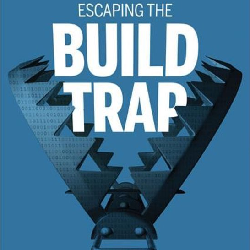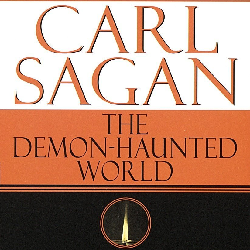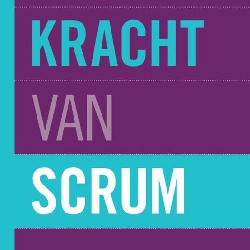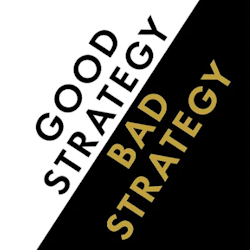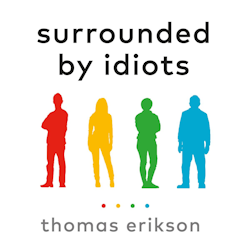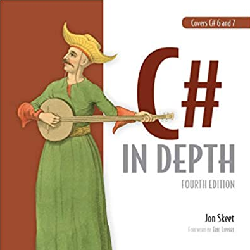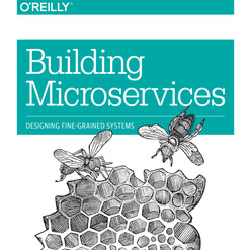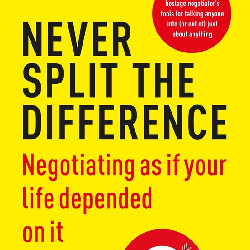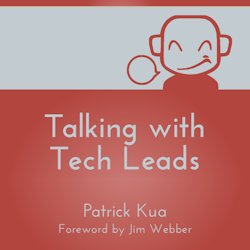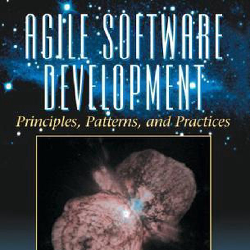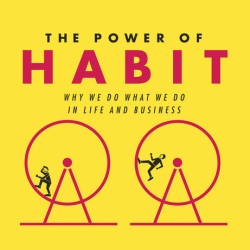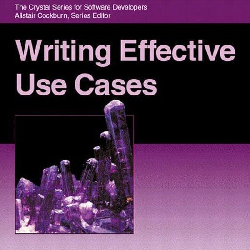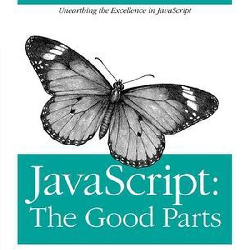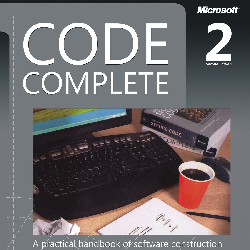Tiers indicate what books mean to me; how much I'd recommend reading them. Rating is the actual quality of a book (given its context and time period).
Made to Stick
100/100, 2006, ISBN 978-1-40006428-1
This was recommended reading for a 7-day course on public speaking. It has changed the way I write and talk with people. And not only in “public speaking” contexts. My e-mails, presentations, conversations, contributions in meetings, documentation, code, and even mundane interactions have been changed (for the better) by the knowledge from this book. On a side note, being able to sell an idea is a crucial skill for software developers, as much as for any discipline. Sure, the book doesn't teach you how to code, but it teaches you equally important “soft” skills.
Influence: The Psychology of Persuasion
100/100, 1984, ISBN 978-0-06-124189-5
This book is absolutely amazing! If nothing else, it should save you a lot of money. By knowing when tricks described in this book are being used on you, you will be able to adjust accordingly. In addition, you can do the reverse. Proper and ethical use of the techniques from this book will help you in both personal and work life. A book I'm likely to read more than once, and if you know me, that is enormous praise!
The Pragmatic Programmer
99/100, 1999, ISBN 978-0-201-61622-4
Even though I've been reading programming books as a hobby for several years, it was this book that inspired me to read even more. This book is a great read, and I'd recommend it to any programmer, any day. It may be a little bit dated, and at times perhaps even a little bit “zealotry”, but if you know that up front you should go through this book in a breeze. PS. Since I wrote this review, there's been an “Anniversary Update” of sorts, and I presume it's even better than the original!
The Culture Map
98/100, 2014, ISBN 978-1-610-39276-1
An absolutely amazing book for understanding other cultures, as well as your own. Invaluable even if you only incidentally work together with people from other cultures. The book provides you with a framework to understand the differences between people from different cultures, as well as some ways to deal with those differences. Wish I had read this years earlier!
The Mythical Man-Month
97/100, 1975, ISBN 978-0-201-83595-3
This book is a classic, and for good reasons! The book has aged, and I did struggle with grasping some parts of the context (what the **** is System 360?), but perhaps that allowed me to focus even more on the timeless bits of advice in this book. Not all the chapters (which are in fact separate essays) were equally good. But I very much enjoy knowing where “Second System Syndrome” and “Mythical Man-Month” have their roots.
Domain-Driven Design
95/100, 2003, ISBN 978-0-321-12521-7
Having a background in logic, math, language analysis, and philosophy, this book was an open door. That is: a brilliantly shaped open door, to greener pastures, and it was a lot of fun seeing someone go through the door in a deliberate manner. The first part of the book is great: in clear chapters it is explained how to structure your domain in a codebase. I found the second part a little less entertaining, as it was not really bringing much (new) interesting info to the table. On the whole though: a great book.
The Non-Designer's Design Book, 3rd Edition
90/100, 2008, ISBN 978-0-321-53404-0
Thoroughly enjoyed this book! It taught me a lot about design heuristics, which is great for someone who isn't artistic in nature. Only two minor pieces of critique come to mind. First, the book is plain damn ugly, not even sticking to its own advice at times. Second, (mainly because the book's aged a bit) the advice doesn't carry over to online publishing without effort on the readers part. Nonetheless: recommended!
The 7 Habits of Highly Effective People
91/100, 1989, ISBN 978-1-471-19520-4
Large parts of this book were extremely insightful, and it's a great read if you want to be more conscientious in how you approach things in life. You just need to "ignore" some of the parts: the bits where the author goes over the top with implementing all this stuff within your family (this hardcore, at least), or the undertone of everything in the end being attributed to "God" when you as a reader might have a different- or no religion. Overall strongly recommended still!
The Prince (Machiavelli)
75/100, 1513, ISBN 978-0-14-144225-9
Like “The Art of War”, this book is a bit of a stretch for a top-books recommendations list of a programmer. Yet, here we are! Yes, you have to draw your own analogies to modern day life. Yes, those might be a stretch. But still, you can learn a lot from them. Many things from the book have a modern-day equivalent, and even if the analogy breaks at times, of even if the advice is not always timeless, it still nets a positive.
Death March
95/100, 2003, ISBN 978-0-13-143635-0
This is a very negative book. As long as you are prepared for that, it is actually a very helpful book. I've read every chapter as: “Okay, assuming the worst, what are my options?”. With that in mind, it is a very helpful book. As such I don't intend to pick up many of the techniques. Things like “Chinese Water Torture” as a technique for negotiating budget for IT projects are not my style. But what the book does do is help recognize when others employ those techniques. And that's very helpful.
Working Effectively With Legacy Code
92/100, 2004, ISBN 978-0-13-117705-5
The book starts off with a mild surprise: its definition for what “legacy code” is. It is defined as “Code without unit tests”. A more appropriate title for this book would've been “Making Legacy Code Unit Testable”. Luckily, my colleague warned me beforehand, so I knew what I was getting into. So I started reading with adjusted expectations, and the book lives up to them. It inspires to take a new look at the legacy code I'm currently dealing with, explains pretty well what refactoring- and dependency breaking techniques are available. Some chapters I skimmed (C macros for unit testing, anyone?), but on the whole: recommended!
Design Patterns
90/100, 1994, ISBN 978-0-201-63361-0
Whether you like it or not, this book is a must read. I can do nothing but recommend it, because so many other books refer to this one. It doesn't hurt to recommend this one though. Dated it may be, it is still a well-written book. In some sense it being dated is even fun: you already know which patterns withstood the test of time.
So You Want to Talk About Race?
95/100, 2018, ISBN 978-1-54164743-5
I enjoy nearly all the privileges a western software developer can have. This requires that I should put effort into paying it forward to those who didn't or haven't got a similarly privileged situation. This book helped me understand parts of this equation. Sure, it's not specifically about my trade, it focuses mostly on one particular aspect (race), and it's even somewhat tied into the situation in the United States as opposed to my region. But if you adjust for those minor changes, the book is still super helpful in all regards.
This Is Lean
95/100, 2011, ISBN 978-91-9803930-6
In a world of “Scrum Certifications”, the “SAFe Framework”, and other agile nonsense, this book is a breath of fresh air! It revitalizes your enthusiasm for working in a truly agile manner. This can be summed up by an abbreviated and paraphrased anecdote from the book: The Lean expert was shown around the factory, shown all the practices and ideas and whatnot, and was asked if he didn't think the western company was really “Lean” now!? The answer: I can't know, I wasn't here yesterday. And that pretty much sums up what's wrong with most companies trying to be “agile” nowadays, and it's great to read it so eloquently written down.
The Infinite Game
94/100, 2019, ISBN 978-0-73521350-0
Yes, you can watch a 10 minute YouTube video on this subject and get 80% of the knowledge from this book as well. Technically a better deal, right? Wrong! Reading through the book firmly settles the core message in your mind, because it is not 10 minutes. I remember little more than the core message from this book, yet I'm sure that if I had only watched the YouTube version, it would've been filed under “cat videos” in my brain instead.
Don't Make Me Think
89/100, 2000, ISBN 978-0-321-34475-5
If you want to read all the classics in IT literature: pick up this book. It's a fun read, and you'll get through it in a few hours. If you want to learn something new: don't pick up this book. That is assuming you've got your web-design basics already: don't clutter the home page, make clickable things look clickable, less is more, do user testing, etc. Yet still, a few years after reading it, I upgraded it to be on my recommendations list. Why? It's a classic, an easy and quick read, and helps understand the software space as a whole.
Switch
85/100, 2010, ISBN 978-0-38552875-7
A great, easy to read book about making a 'switch' in your personal or professional life. This book helps you change a habit, a process, a team, or anything similar. Enjoyed reading it qutie a bit, although it could've possibly also been said in half the number of pages.
Thinking, Fast and Slow
92/100, 2011, ISBN 978-0-37427563-1
Even though it's a "tough" one to chew through, the book is filled with things you really want to know. Things from psychology that will influence the way you do your work, your shopping, your hobbies, and in general how you make choices in your life, and view those of others. I recommend treating each chapter as a small book on its own to keep motivation up to read through the entire thing. But it's worth it!
Agile Estimating and Planning
88/100, 2005, ISBN 978-0-13-147941-8
This book, preferably preempted by reading the official scrumguides.org description, is probably the best possible source of information for Scrum and Agile in general. The book clearly reinforces pieces I'd puzzled together already using common sense and experience, as well as introduces new ideas and tricks. Wish I had read this book much earlier in my career, but better late than never I guess. Highly recommended!
Dependency Injection in .NET, 2nd Edition
86/100, 2019, ISBN 978-1-617-29473-0
The only book where I've bought a 2nd edition and read the whole thing again. Even though “.NET” is in the title, it can be useful to any developer. The authors are absolute experts, and this latest edition is a must read for anyone building full-scale modern applications.
Sprint
90/100, 2016, ISBN 978-1-50112174-6
The book on the “Google Ventures Design Sprint” principle is an easy and fantastic read! Reality has caught up with it, and its proponents have already (true to the idea behind the book) evolved the way they run Design Sprints. But, if you know this, the book is still a great starting point, or at the least historical context. The book details the original idea behind a “one week design sprint”, where you test and (in)validate an idea you have. With real users, and a real prototype. Having tried this actual approach as well showed me the ideas in the book are sound, especially when adapted to your specific situation.
TED Talks
92/100, 2016, ISBN 978-1-47222806-2
Mostly, this book was a lot of fun to read! In anecdotal fashion, the anatomy of a great presentation is laid out. To be used as inspiration for your own presentations, as well as other situations where you want to convince someone of your ideas. And that latter part is where it shines, and why it makes my list of recommended books. Take the ideas and inspiration from this book, and apply them in your everyday life! Convince your colleague of an idea you have, excite your audience in any situation with a proper bit of storytelling: this book tells you how!
The Art of War
75/100, 2011, ISBN 978-0-00-742012-4
This book is on my list of recommendations, because I enjoy stretching analogies as far as they can just to learn something from the source material. The text is old, and it shows. So if you also like historically important texts where analogies can help you understand modern days: this one's for you too.
The Clean Coder
87/100, 2011, ISBN 978-0-13-708107-3
Caveat! The author of this book has unfortunately recently shown a blatant lack of empathy for underrepresented groups, amongst a few other bits of behavior I don't condone. However, this book from some time ago did have quite a few bits of solid advice.
Clean Code
85/100, 2008, ISBN 978-0-13-235088-4
Caveat! The author of this book has unfortunately recently shown a blatant lack of empathy for underrepresented groups, amongst a few other bits of behavior I don't condone. However, this book from some time ago did have quite a few bits of solid advice.
How Big Things Get Done
70/100, 2023, ISBN 978-0-59323951-3
This book was enjoyable albeit a bit repetitive at times: the entire thing could've been in one-tenth of the pages. Also dropped one extra tier because it lumps IT projects together in one group while splitting e.g. "Energy" into several types.
Against Empathy
71/100, 2016, ISBN 978-0-09-959782-7
Perhaps not a book to fully agree with (and that's *not* about the clickbait title), but it provoked some fresh thoughts nonetheless. Enjoyed reading it and I actually changes small bits of my day to day behavior after reading this, especially in work.
No Rules Rules
69/100, 2020, ISBN 978-0-75356096-9
An interesting read about running a software company, especially relevant for the context of large international organizations. I had my doubts for lots of the advice in this book, but that's actually valuable to me in a book: it helps me organize my own thoughts on matters. Only thing I'm a little disappointed in is that I expected more actual critique and disagreement from Erin Meyer's side.
The Hard Thing About Hard Things
68/100, 2014, ISBN 978-0-06-227320-8
This book made me feel like I became part of a 'Shark Tank' episode, against my will. It mixes equal parts cringe, bad advice, and great advice. So I stuck through it and took from the book what I needed, disregarding (or awkwardly smirking about) the rest.
Good Strategy, Bad Strategy
64/100, 2011, ISBN 978-1-78125617-6
An interestsing book in general, but aimed at such high level decision making that it's not relevant to my own work. Or that of most people. Still, some of the advice carries over to smaller companies and positions with a little less influence than being the CEO of a billion dollar company.
Surrounded by Idiots
60/100, 2014, ISBN 978-1-78504218-8
At the bottom of this tier I list this book, which I still recommend reading... with caveats. While reading I constantly switched between feeling "this stuff is not much better than horoscopes", and "huh, that's an interesting way of looking at things!". So the book is good to get some fresh ideas about work relations, but that's about it.
C# in Depth, Fourth Edition
88/100, 2019, ISBN 978-1-617-29453-2
Highly rated because it's a super high quality book (as expected given the author), but low-tier for me as I wouldn't recommend it to most people. Studying in different ways instead (or perhaps keeping this book as a reference) seems better.
Never Split the Difference
70/100, 2017, ISBN 978-1-84794149-7
Both hated and loved this book. It's super interesting, but the fact that it speaks lightly of morally and ethically dubious practices (hostage negotiation tactics are not equally acceptable in other contexts) makes me not recommend this book without severe disclaimers.
Talking with Tech Leads
68/100, 2013, ISBN 978-1-50581748-5
Great concept! The introduction is also very good. The interviews are okay themselves, but quickly get quite repetitive. After the fifth time reading "I get in an hour early to clear my e-mail" I get the point already. So, I recommend you do as I did: start reading the book, and when you grow weary switch to *skimming* the rest of it.
Meditations
65/100, -170, ISBN 978-0-14-044933-4
Stoicism is something quite close to me, so I figured I had to read this classic work in its original form. The foreword in my edition was absolutely horrible and it took me 6 months to reboot my attempt at reading it. The Meditations books themselves were on one hand great to read for historical perspective, and on the other hand mostly not as 'timeless' as I had expected. Glad I read it, but can only recommend it if you have the same drive to "having read" it.
Where's the rest!?
I've read many more books of course, but they're not on this list. First off, there's no fiction on this tier list. I read very little of it, certainly not enough to have an interesting list of them.
Second, the list only contains books that could be considered a "must read" by at least some people. So no super-specific books like "ASP.NET 4 Internals" or "HTML 3.2 in 24 Hours" on here either.
Third, I don't like reading much (even though I do like to have read). So I tend to research what the classics and recommended books are before diving in at all. Therefore no fringe books are likely to appear on my list.
Lastly, I can easily drop a book if I dislike it; and not waste any further time on it. So books I quickly stopped reading (so especially low rated books) don't appear on my tier list because I dropped them before giving them a good rating.
